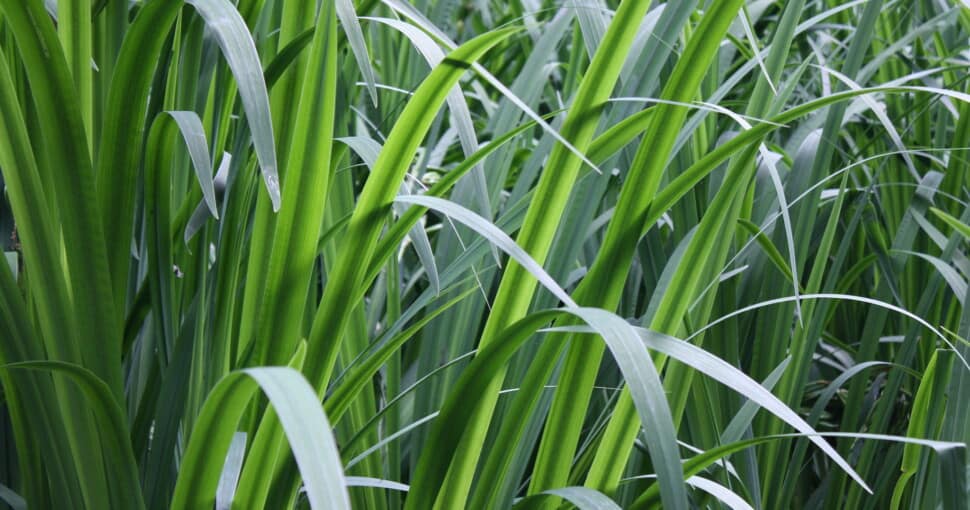Grass is such a commonplace plant that people seldom give it too much thought. Grass is incredibly important for animal food and maintaining the health of the landscape. Close examination of grass blades shows wide variations that are interesting and beautiful.
A grass blade is the leaf of the grass. It is often referred to scientifically as the lamina. Grass blades arise from nodes on the grass stem or culm. Leaf blades are long, narrow structures with veins and parallel sides. They taper into a sharply pointed or blunt tip.
Grass blades can be found in many colors, including shades of green. They also may be yellow, brown, or red. Some leaf blades change color as the seasons change. Although grass is regarded as a mundane plant, it can be very attractive, and many gardeners want to reproduce the impact of large swathes of grass in their cultivated gardens.
Related:
– 10 Plants That Look Like Monkey Grass
– 8 Plants That Look Like Lemongrass
1. Liriope
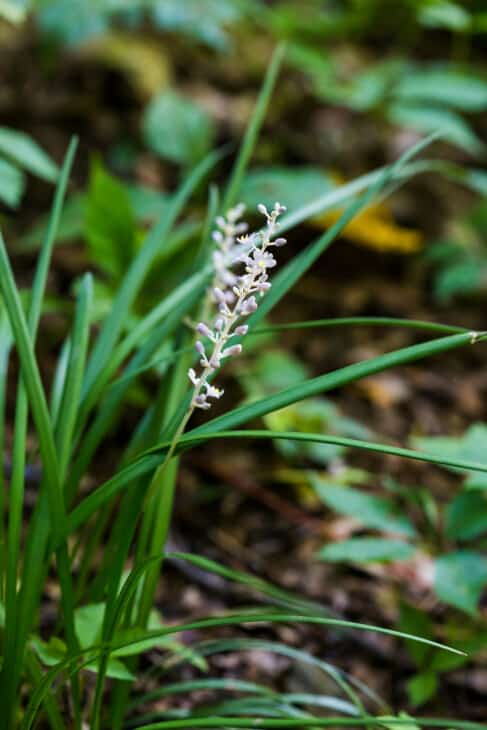
Liriope is known by the colloquial name lilyturf. It grows indigenously in forests, ravines, and open slopes in China, Korea, and Japan. It has evergreen glossy green narrow leaves that resemble grass blades. It is a low-growing perennial that has become popular with gardeners worldwide who wish to have grass-type plants in their gardens.
Liriope muscari is a popular species that bears small purple flowers. Liriope muscari Gold Band has gold edges on the leaf blades, and Variegata has creamy yellow leaf margins. Liriope muscari Monroe White produces white flowers instead of purple. There are many different liriope muscari varieties to choose from.
Although liriope looks similar to grass, it is not a true grass, and despite its common name, lilyturf, it is also not a lily. It belongs to the family Asparagaceae. It is fairly drought-tolerant, frost-resistant, and easy to grow, making it a favorite with gardeners.
Liriope grows in most soil types but does best in light, slightly acidic soil with good drainage. It can grow in shade, full sun, or semi-shade but can become burned by the sun in very hot climates.
2. Mondo Grass
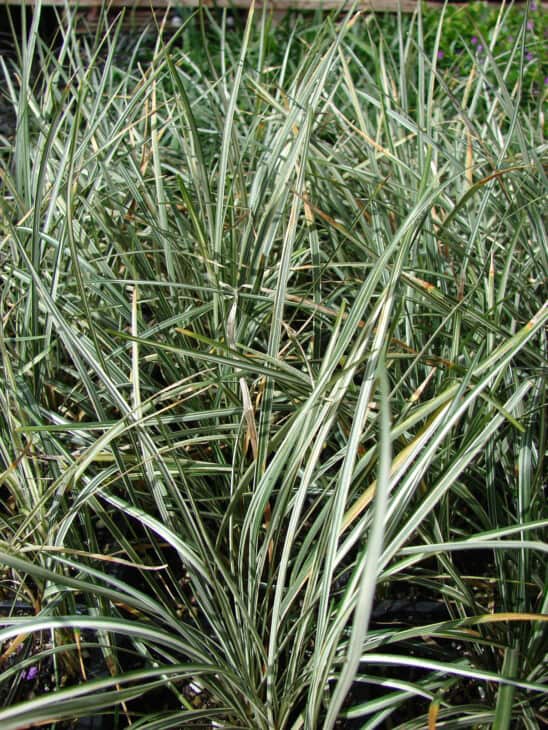
Mondo grass (Ophiopogon japonicus) is another plant from the Asparagaceae family which looks similar to leaf blades. It is native to China, Vietnam, India, and Japan and goes by the additional name fountain plant and monkey grass. Its Japanese name means dragon’s beard.
It grows in dense sods and is popular as a ground cover in ornamental gardens. The leaves are seven to fifteen inches long and are light green or variegated. The plant grows from underground stolons with tuberous roots. In China, tubers are eaten to balance energies in the body.
Mondo grass is sometimes used in aquariums or ponds. It is not a truly aquatic grass, and its life span is shortened in a watery environment. Copious amounts of water are needed to grow mondo grass, and it does not do well in dry climates.
White or lavender flowers appear in early summer, and these give way to round black berry-like fruit. Establishing mondo grass is the most difficult stage, but once it is growing successfully, it will continue to propagate itself.
3. Maianthemum Stellatum
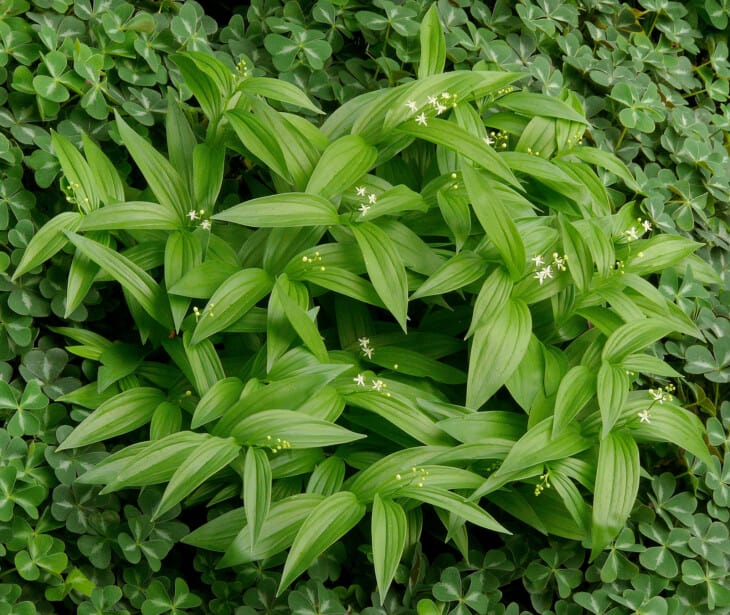
Maianthemum stellatum, fortunately, has a much more pronounceable common name; starry false Solomon’s seal. It is also known as the starry false lily of the valley in some regions. This plant is found growing indigenously throughout North America and into northern Mexico.
Maianthemum stellatum has elliptical leaves six inches long that taper to a point similar to grass blades. The leaves are bright green or blue-green with parallel veins that run from the tip to the base of the leaf. There is a prominent mid-rib, and the lamina (leaf sides) may fold slightly around it.
The leaves are born on a green stem making the plant look even more like grass. The stem has a characteristic pattern of zigzagging between alternating leaves.
Maianthemum stellatum bears a flower spike with up to twenty small white flowers with yellow or cream stamens in late spring or summer. The flowers give rise to red and green striped berries, which become a solid purple-red color when ripe in the fall.
Starry false Solomon’s seal is an herbaceous perennial that grows from dense underground rhizomes. Multiple plants grow from the rhizomes forming thick patches. Gardeners should be aware of this and allow space for the plant to spread or remove excess stems.
4. Dasylirion Wheeleri
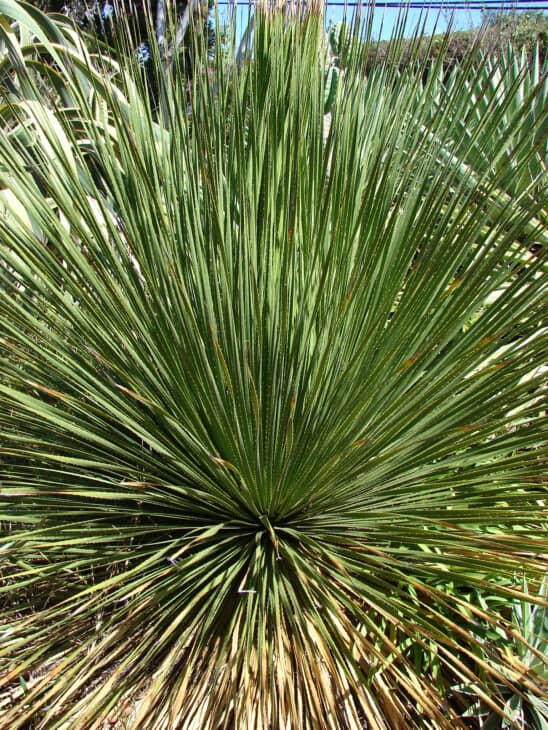
Daisylirion wheeleri has several common names: desert spoon, common sotol, sotol, or spoonflower. This plant is a member of the Asparagaceae family and the subfamily Nolinoidaceae. The desert spoon is indigenous to arid regions in Mexico and the southwestern United States. It is usually found at elevations of three thousand to six thousand feet.
Although the desert spoon looks like a ball of grass when young, it is classified as a shrub. It is slow growing, evergreen, and can reach up to five feet tall and five feet wide after numerous years.
The desert spoon leaves are green or bluish with reddish-brown spines at the leaf margins. The tip of the leaf may bear fibrous tufts of hair. A tall stalk grows from the foliage in late spring or early summer. The stalk can be fifteen feet tall, giving rise to creamy white flowers.
The long-living desert spoon is easily propagated from seeds and survives in areas where water is limited. It is popular with gardeners that prefer a water-wise garden. The plant will grow faster if water is provided regularly, but the soil should have good drainage.
The leaves of the desert spoon plant are fibrous and have been used by indigenous people for centuries to make baskets and sleeping mats. An alcoholic drink made from the plant is known as sotol.
5. Sansevieria
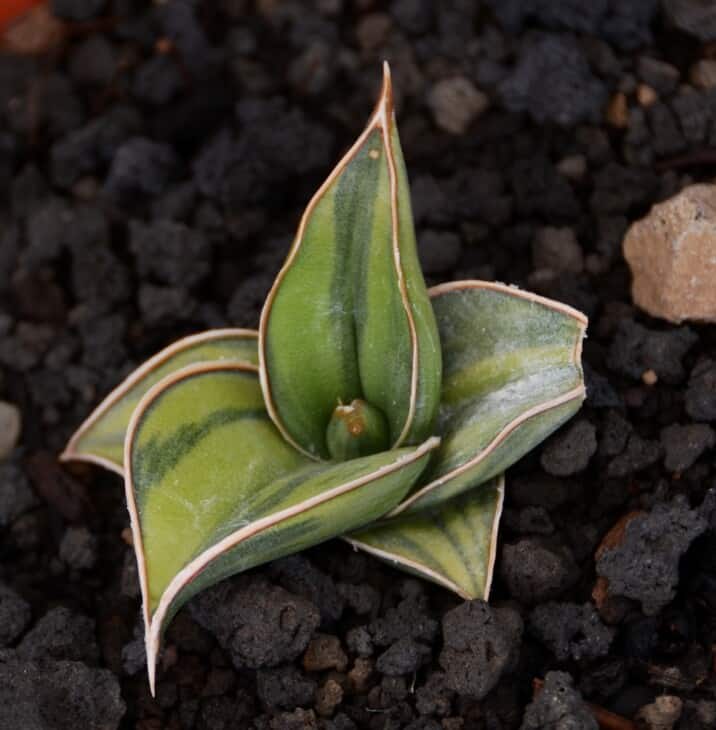
Sansevieria is commonly known as snake plant, mother-in-law’s tongue, or djinn’s tongue. It is part of the Asparagaceae plant family and the genus Dracaena. Sansevieria grows indigenously in Africa, Asia, and Madagascar. There are seventy species of sansevieria, but they are all characterized by narrow leaves similar to grass blades.
Sansevieria that grow in arid regions have hard leaves adapted to reduce evaporation and moisture loss. The succulent-type leaves may have a thick waxy cuticle, and some are cylindrical. Soft-leaved sansevieria species originate in tropical or sub-tropical climates.
Sansevieria leaves have many different colors and patterns. Some are plain green, others have leaves rimmed with yellow, silver, or cream, and others have wavy horizontal patterns in different hues.
Sansevieria produce small greenish-white, rose, brown or purple-red flowers on a spike or raceme. The spike may be a single stem or branched. They grow from rhizomes and spread in thick clumps if growing conditions are favorable.
These are easy plants to care for, both in pots and in the garden. The hard-leafed variety needs minimal water and thrives without much care. They usually live five to ten years but can live up to twenty-five years in optimal conditions. Sansevieria are usually slow-growing plants but can be encouraged to grow faster by providing more water and warm temperatures.
Snake plants are popular house plants as they efficiently remove toxins such as carbon dioxide, benzene, formaldehyde, trichloroethylene, and toluene. They are excellent producers of oxygen and one of a few plants that convert carbon dioxide to oxygen at night. This makes them popular in bedroom décor.
Sansevieria releases moisture into the atmosphere. Scientists recommend these plants for allergy sufferers as the extra moisture reduces dust and pet dander in the air.
Some species of sansevieria have been used for hundreds of years to make baskets, ropes, and bowstrings from their tough fibers. Although nylon and other synthetic fibers have replaced sansevieria in modern cultures, sansevieria fibers are still used by rural third-world people.

